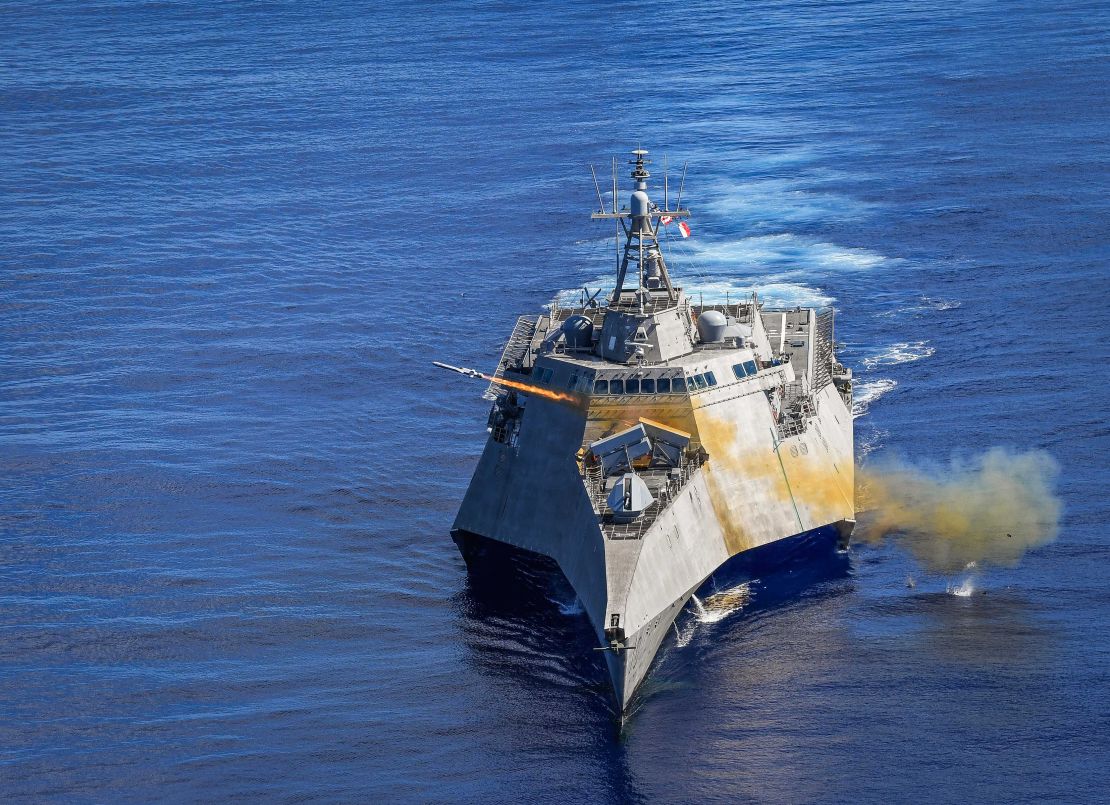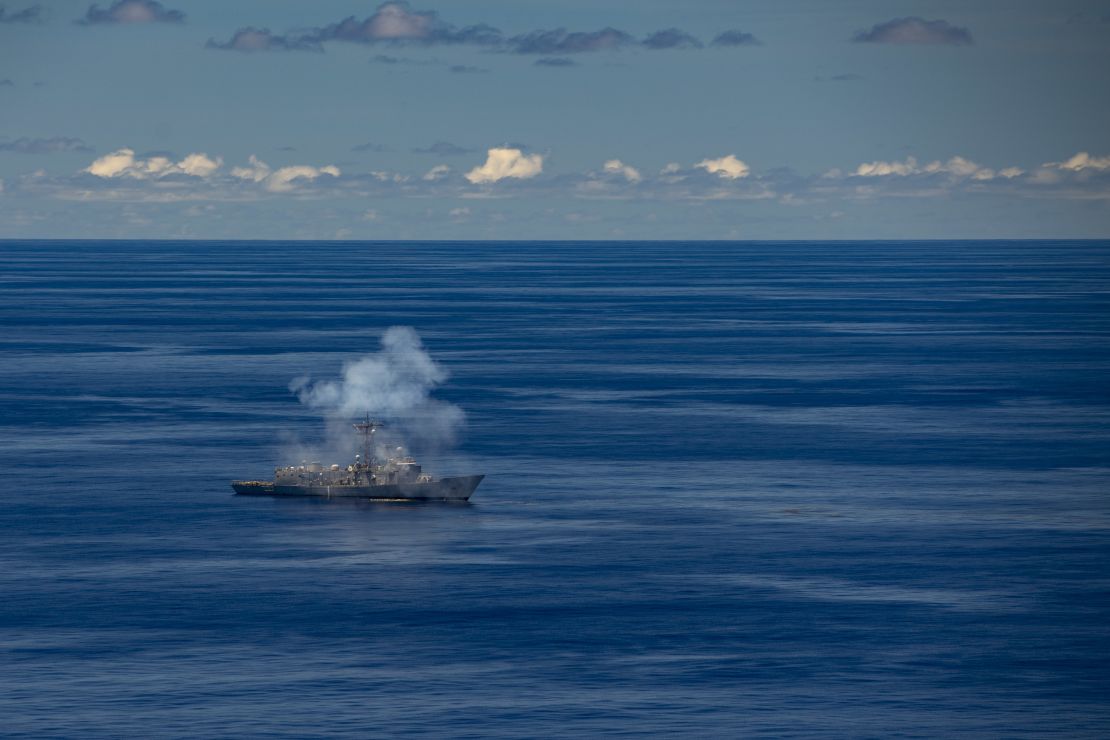As China paraded some of its most powerful weaponry during celebrations marking the Communist state’s 70th anniversary on Tuesday, the United States Navy tested its newest piece of firepower in the Pacific.
In the waters off Guam, the USS Gabrielle Giffords fired off a Naval Strike Missile (NSM), a sea-skimming cruise missile that is difficult to spot on radar, and can maneuver to avoid enemy defenses.
The NSM, along with a variety of other weapons, were fired at a surplus US Navy frigate, the former USS Ford, which was towed to the Pacific to act as a target in an exercises called SINKEX.
The Giffords is the first US Navy ship to deploy with the Naval Strike Missile, and analysts say it helps even the equation in the Pacific, where China has been increasing its missile arsenal in terms of quality and quantity.

China now enjoys a 3-to-1 advantage in cruise missiles over the US, but the Naval Strike Missile can eventually “change the game,” said Carl Schuster, a former US Navy captain now an instructor at Hawaii Pacific University.
“The Pentagon is building a military force that can operate on a more sustainable basis and has a better chance of fighting and surviving within the PLA’s deadly anti-access, area denial envelope,” said Rand Corp. senior defense analyst Timothy Heath, referring to the mix of ships, aircraft and missiles amassed by China’s People’s Liberation Army to control parts of the Pacific.
The PLA was showing off much of that new arsenal on Tuesday in Beijing – everything from intercontinental ballistic missiles to new submarine drones.
“It is to show how much progress it has made, and how much more advanced it is compared to years before. Now, China has better capability to defend itself. It deserves equal and fair treatment from other powers,” Carnegie Tsinghua Center senior fellow and military analyst Tong Zhao told CNN.
Much of the US-China tension has been focused on the South China Sea, one of the most contested areas in the world. Multiple countries claim parts of the commerce-heavy region, but Beijing’s claim is by far the most expansive, covering the majority of the sea.
The sleek, stealthy Giffords, is a littoral combat ship (LCS) designed for operations in the shallower waters around coastlines and islands.
Most of the ships in the US Navy’s growing LCS fleet, which will eventually number more than 30, are planned to be armed with the Naval Strike Missile, Navy officials told a Senate Armed Services subcommittee earlier this year.
Key to the Naval Strike Missile is its range of more than 100 miles, more than 30% farther than the Harpoon missiles the US Navy has been using in this anti-ship capacity.
The ability to work with the helicopter drone enables the ship to target outside what its own surface radars can see.

Tuesday’s live-fire SINKEX exercise in the Pacific also saw missiles launched from other US Navy aircraft, bombs dropped from US Air Force B-52 bombers, and Harpoon missiles launched two stealth frigates from the Singapore Navy.
“This exercise provided important opportunities for realistic at-sea training with live ordnance, conditions that cannot be duplicated otherwise,” US Navy Capt. Matthew Jerbi, co-commander of the the exercise, said in a statement. “Training alongside our Singapore partners in a complex exercise like this is invaluable.”
Singaporean Col. Lim Yu Chuan said the exercise was “a valuable platform for the two navies to strengthen our mutual cooperation and interoperability.”
“With the vast training space available in the waters off Guam, the exercise also provides the RSN (Singapore Navy)with the opportunity to conduct high-end exercises of substantial scope and complexity,” Lim said.


















